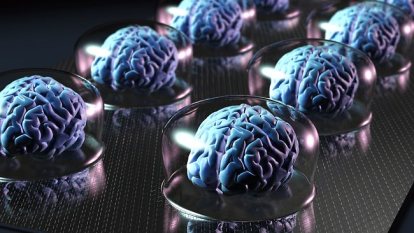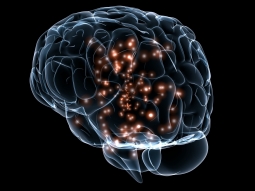Part 5 of my “Senior Moment or…Something More?” Series
In my former life, I worked as a Clinical Laboratory Scientist in community-based hospital laboratories. During those 40+ years, I pretty much “did it all”, 
including the area of Anatomic Pathology. That’s the laboratory section that analyzes, evaluates, and reports out information on body parts. Think cancer diagnoses, tissues delivered from surgery for frozen sections, and autopsies in the morgue.
I am fortunate to live in a location where lots of research on aging, dementia, and Alzheimer’s disease is happening. (That’s probably due to the high number of aging brains that retire annually in Arizona.) Because clinical laboratories are required by law to keep tissues removed from humans for an indefinite length of time,  all pathology labs have a storage closet where brains are kept submerged in formaldehyde. Lab staff is so accustomed to seeing these, they don’t really notice the multi-ridged, gooey-looking specimens, some packed in a nice, tight configuration signaling a healthy brain and others looking deprived – with gaping spaces indicating shrinkage. This can be caused by the brain’s veins (which carry blood cells and oxygen) deteriorating with age, resulting in mini-strokes (also known as TIAs) that go unnoticed, but have a cumulative effect over that long haul we call “life.” Or it can be more sinister: the plaques and tangles of Alzheimer’s.
all pathology labs have a storage closet where brains are kept submerged in formaldehyde. Lab staff is so accustomed to seeing these, they don’t really notice the multi-ridged, gooey-looking specimens, some packed in a nice, tight configuration signaling a healthy brain and others looking deprived – with gaping spaces indicating shrinkage. This can be caused by the brain’s veins (which carry blood cells and oxygen) deteriorating with age, resulting in mini-strokes (also known as TIAs) that go unnoticed, but have a cumulative effect over that long haul we call “life.” Or it can be more sinister: the plaques and tangles of Alzheimer’s.
My recent research* indicates:
- Brain shrinkage, causing loss of brain mass, is unfortunately part of the n
 ormal aging process. Our brains shrink a lot from ages fifty to ninety.
ormal aging process. Our brains shrink a lot from ages fifty to ninety. - Any “normal” brain over the age of 70 has some tangles, but they are found only in a “restricted area.”
- In Alzheimer’s, the rate of these tangles and plaques spreading to the outer layers of the brain and causing abnormal shrinkage, doubles every five years.
Dr. Thomas Beach from the Brain and Body Donation Program at Banner Sun Health Research Institute in Sun City, Arizona is interested in recruiting donors who will eventually become part of that “storage closet.” He wants to sign up participants when they are still healthy and have at least ten years of projected life left. Dr. Beach says, “The sooner, the better. See us once a year. We’ll assess neuropsychological, cognitive abilities, how you move, your coordination of brain with muscle, and how all of that declines gradually with age. Unfortunately, in some people, it evolves into Parkinson’s and Alzheimer’s disease. And, if you agree, you decide if you want to donate just your brain or your whole body.” Hmmm. Now there’s some food for thought.
Some healthy lifestyle pointers next time
.